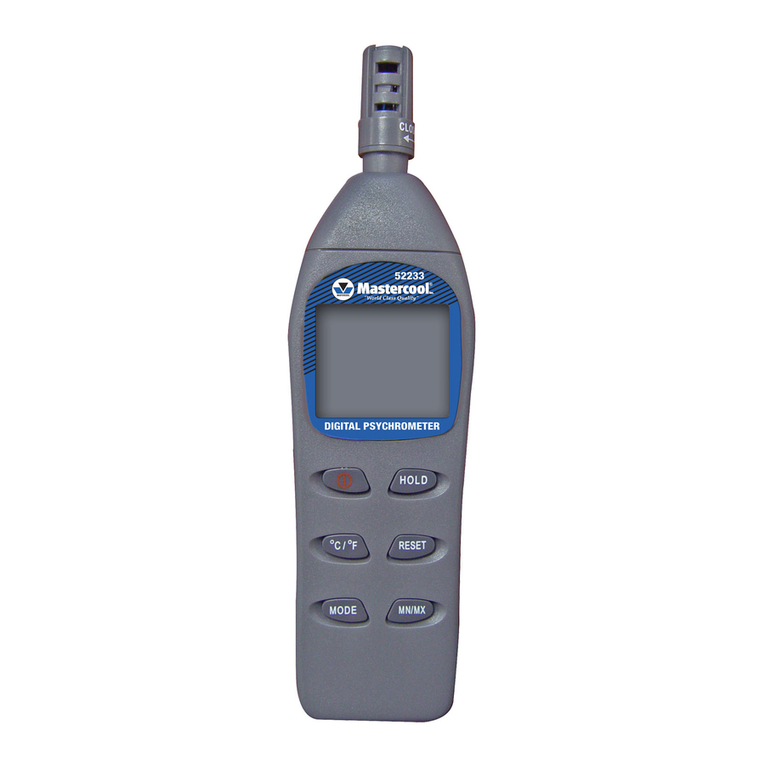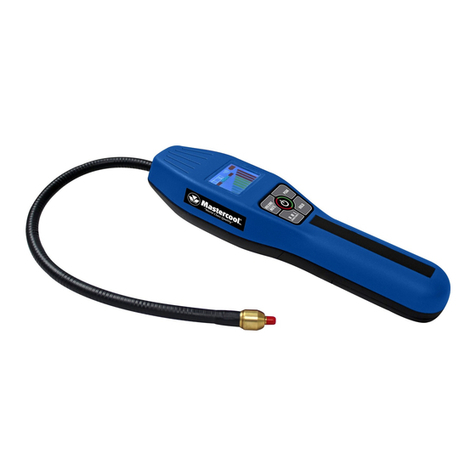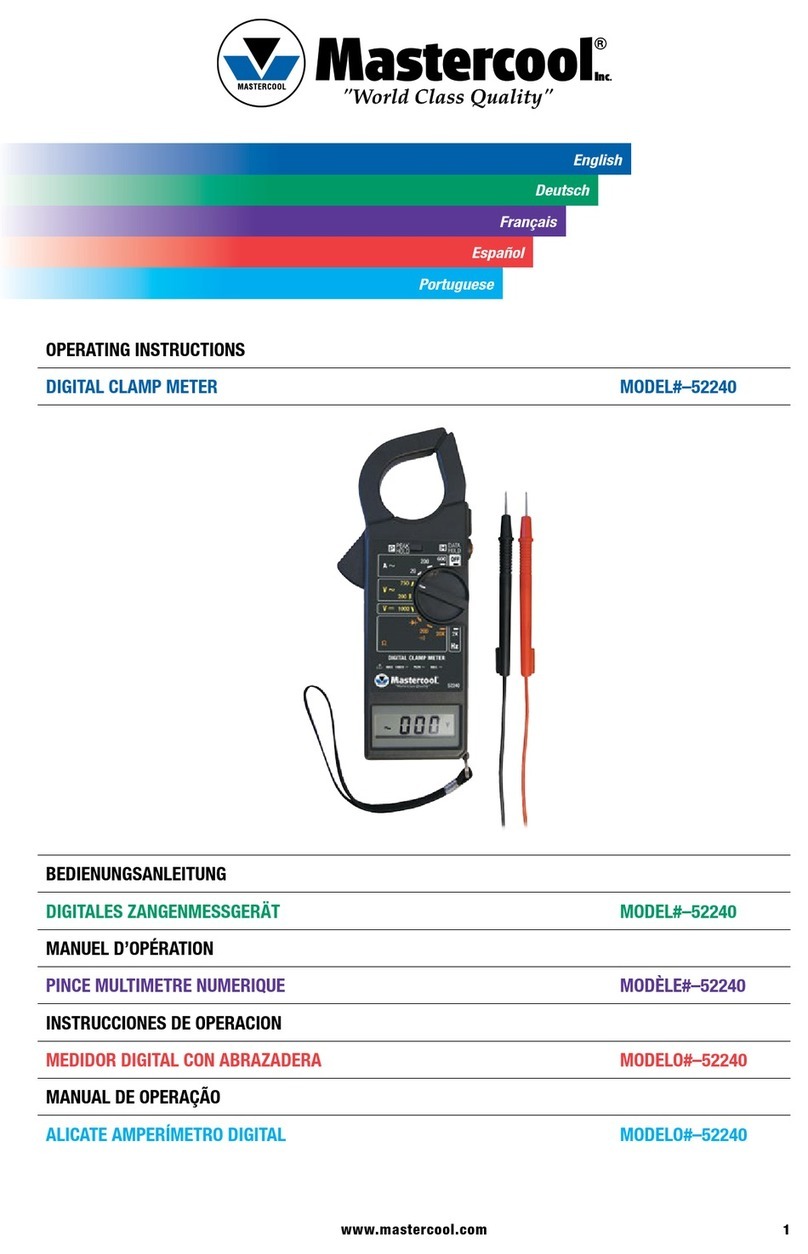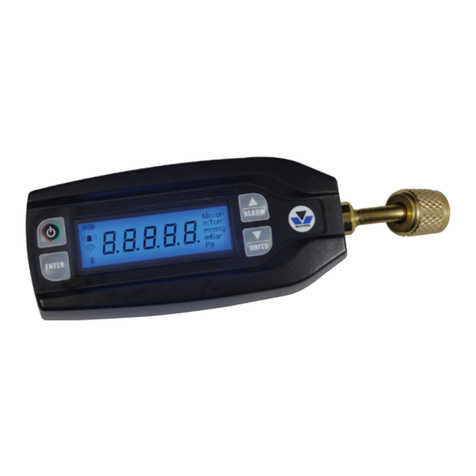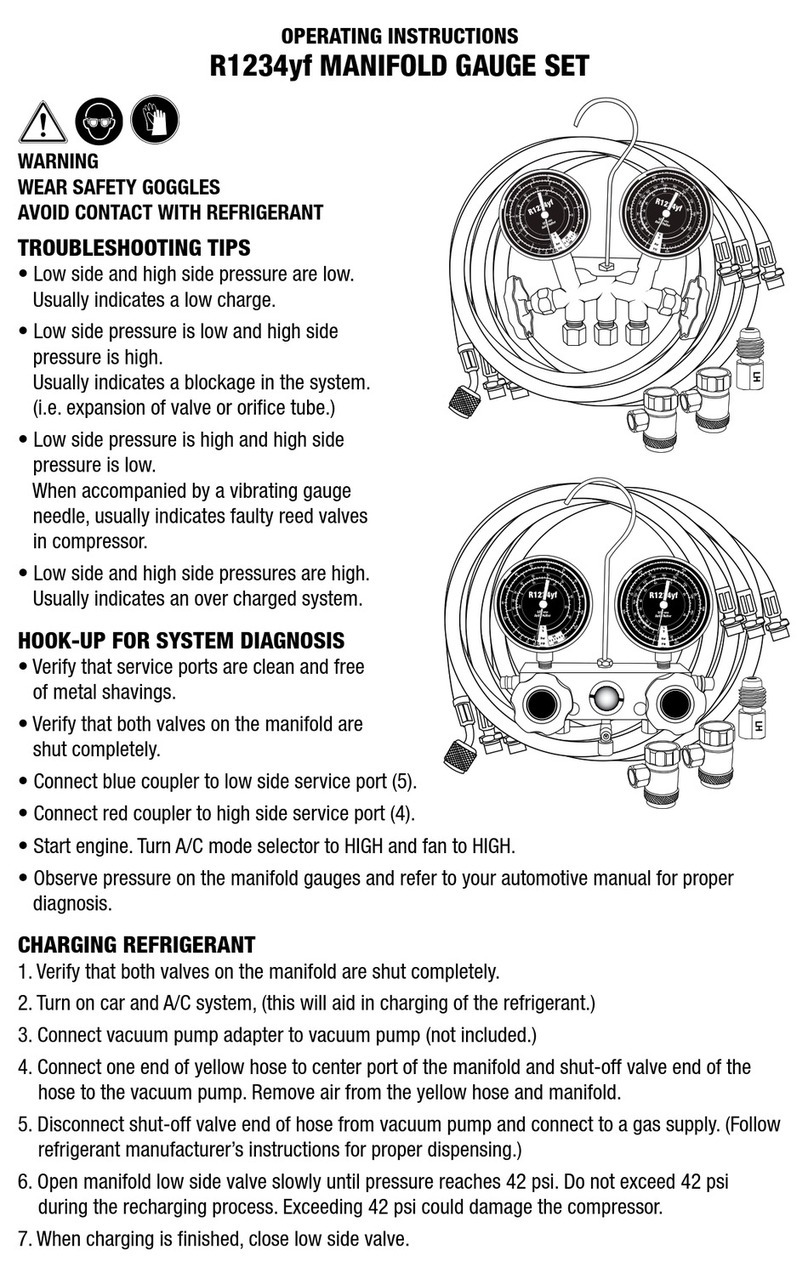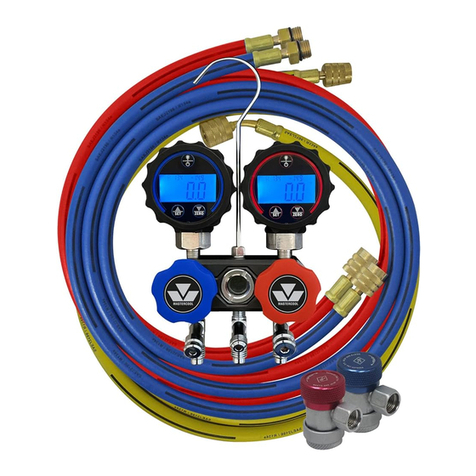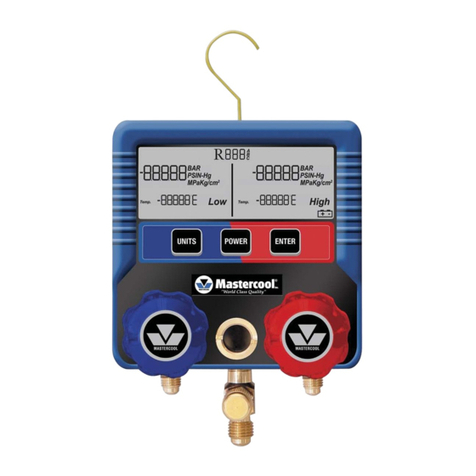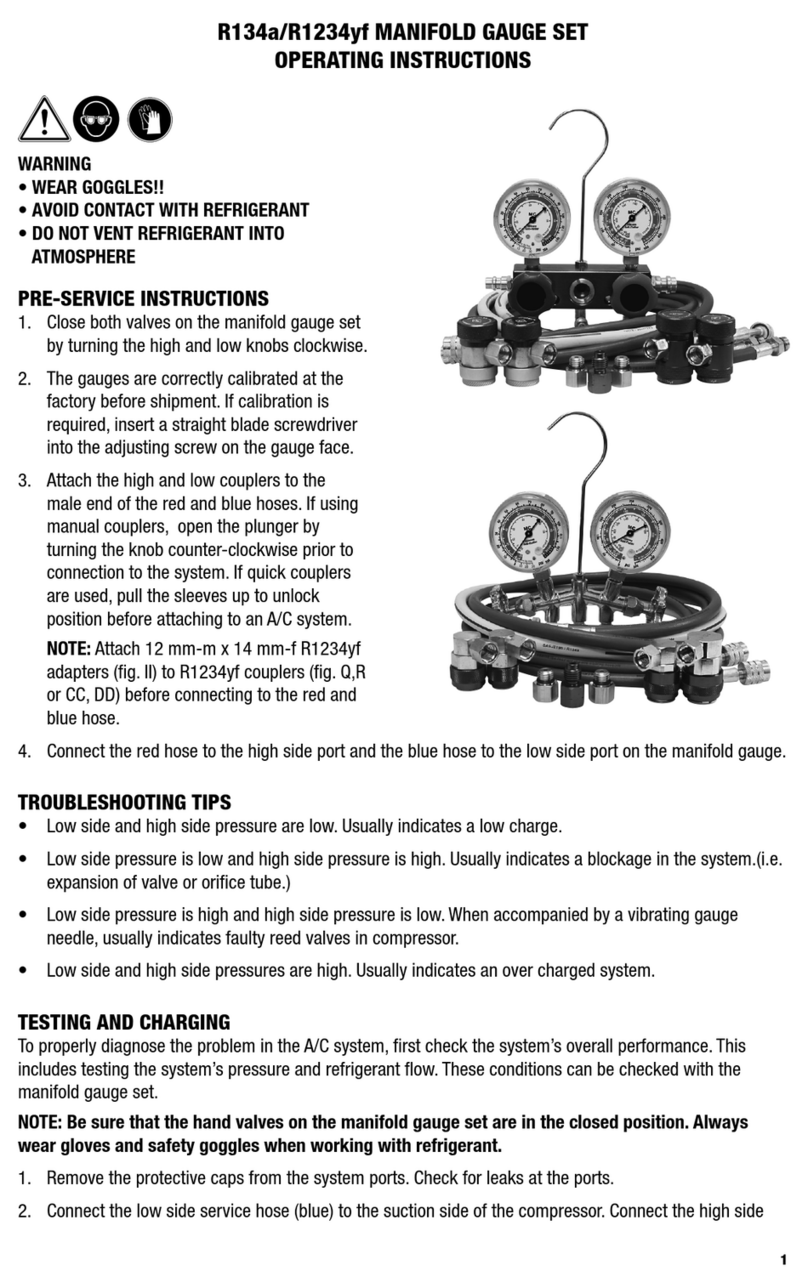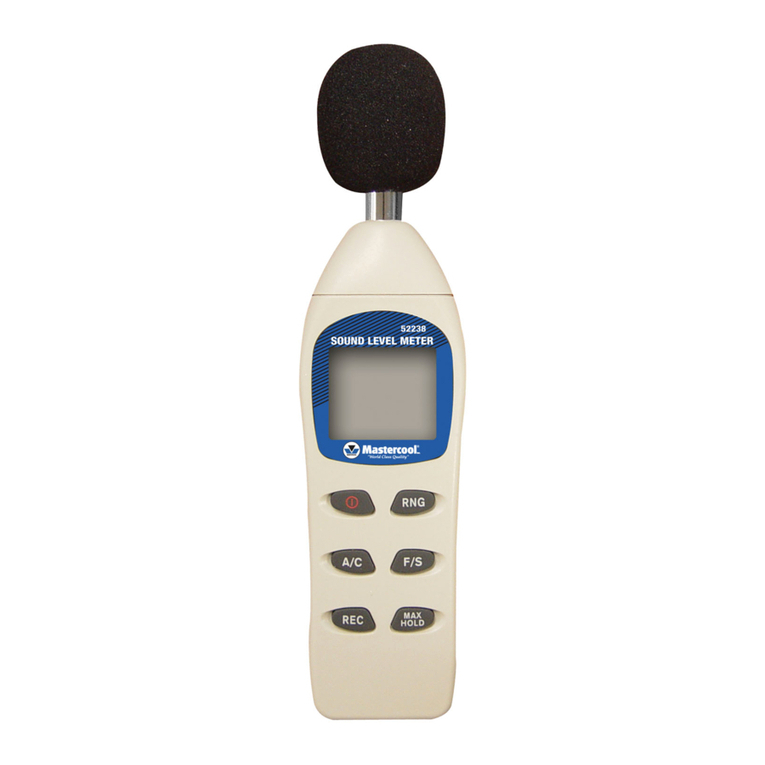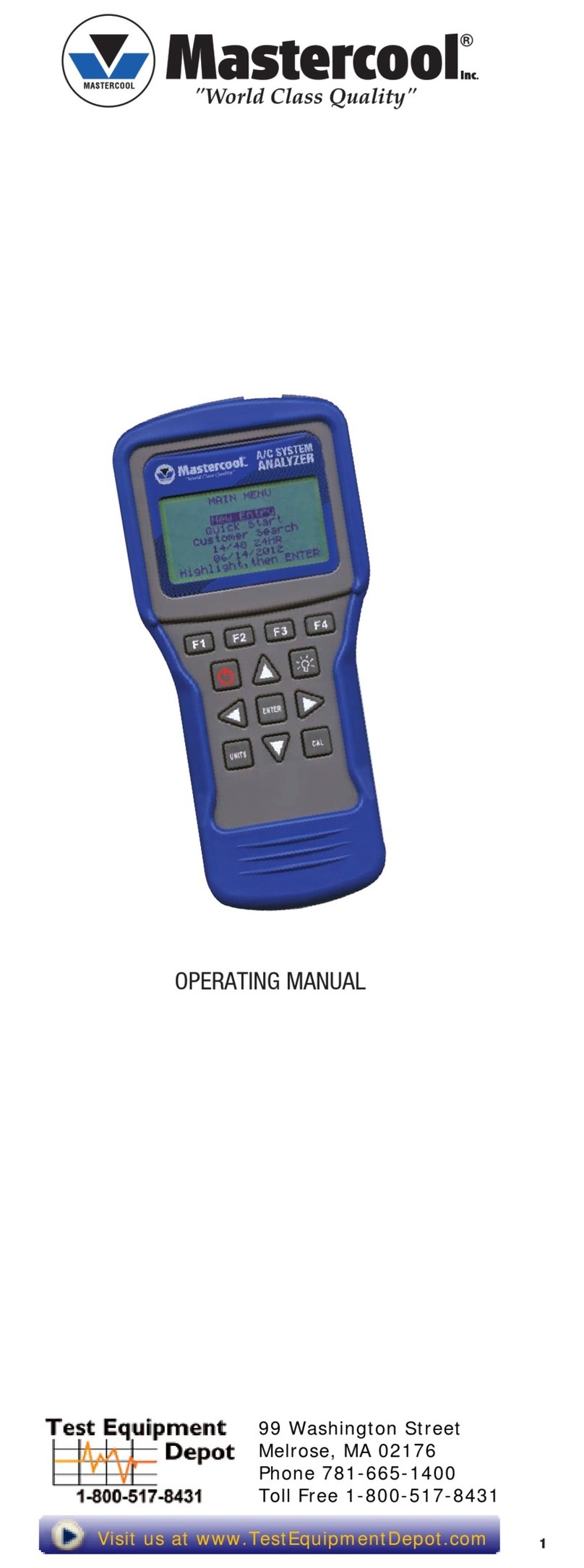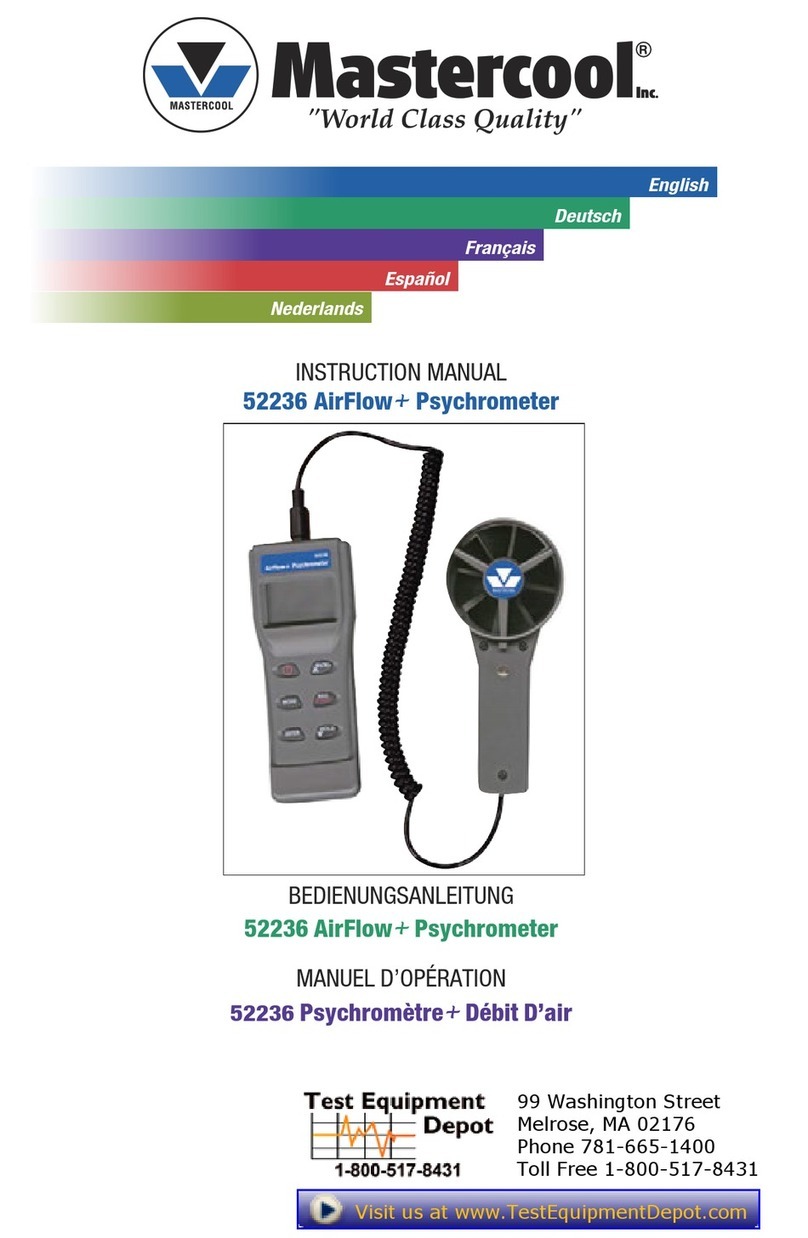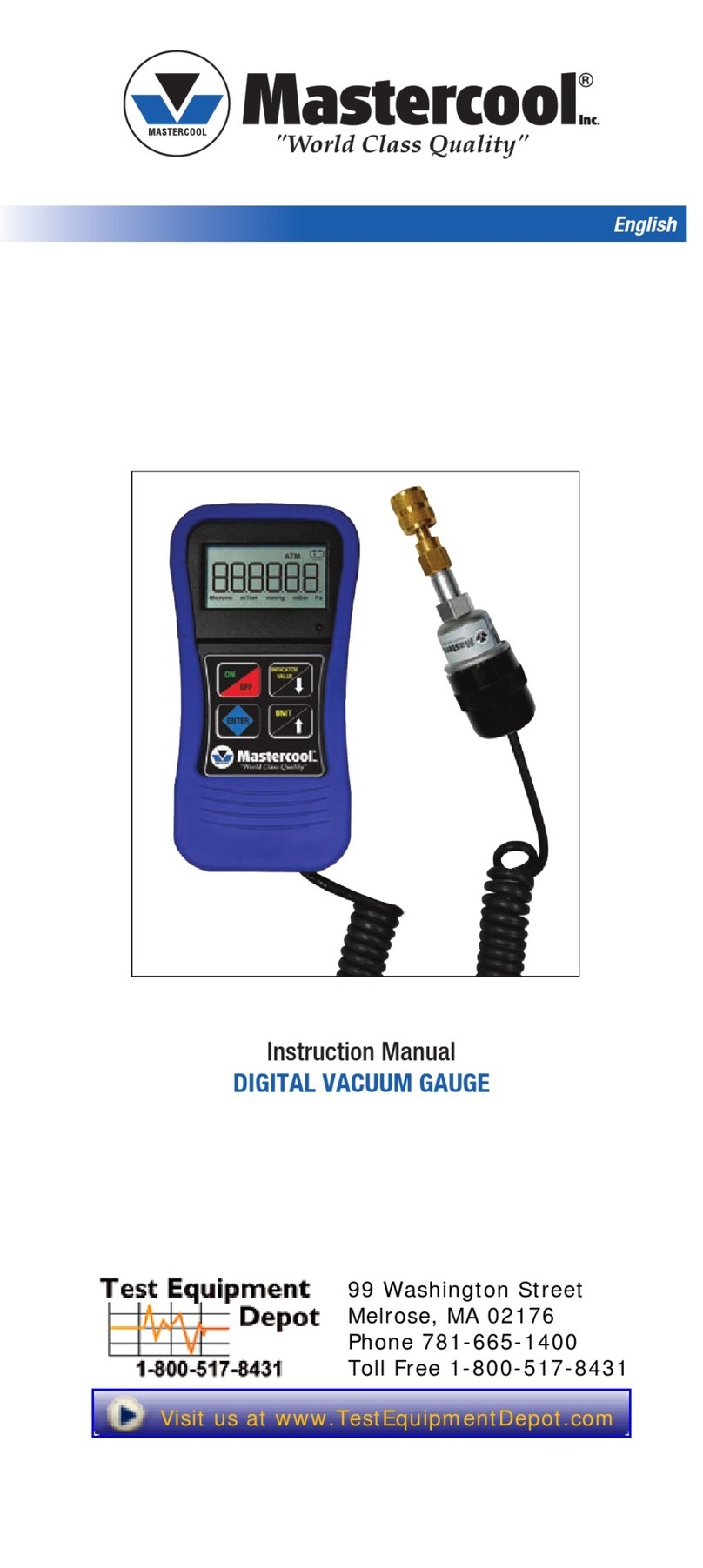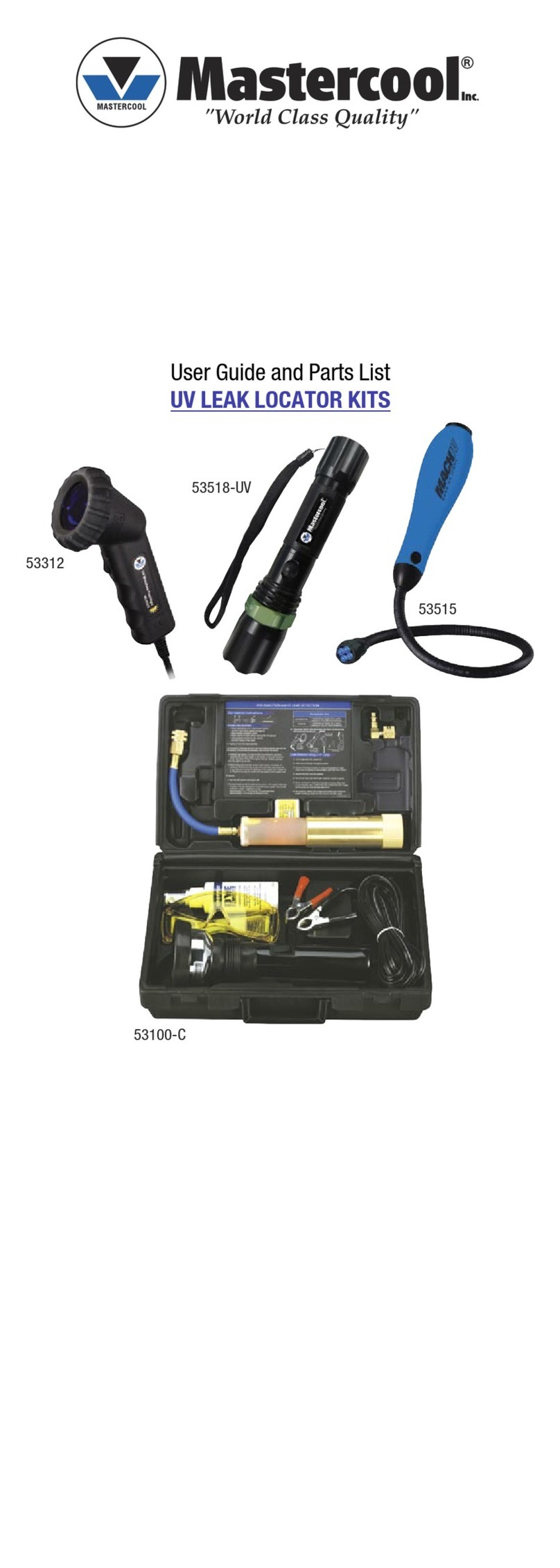
3www.mastercool.com
• NEVER admit any sample into the instrument at pressures in excess of 500 psig.
• NEVER obstruct the air intake, sample exhaust or case ventilation ports of the instrument during use.
1 INTRODUCTION AND OVERVIEW
1.1 General
Contamination and mislabelling of refrigerants either in storage cylinders or air conditioning systems can lead to component cor-
rosion, elevated head pressures and system failures when utilized by unsuspecting technicians. The ability of the technician to
determine refrigerant type and purity is severely hampered by the presence of air when attempting to utilize temperature-pressure
relations. The development of various substitute refrigerants further complicate the ability of a technician to identify refrigerant purity
based upon temperature-pressure relationships. The substitute refrigerant blends can also introduce a ammability hazard to the
technician and the ultimate end user of the air conditioning system.
The Mastercool Ultima ID Pro™ Refrigerant Analyzer provides a fast, easy and accurate means to determine refrigerant purity in
refrigerant storage cylinders or directly in air conditioning systems.
The instrument utilizes non-dispersive infrared (NDIR) technology to determine the weight concentrations of multiple refrigerant
types. Refrigerant purity is displayed on the LCD Screen and the user must determine acceptable levels of purity based on their
recovery or use standards. The instrument is supplied complete with a 1⁄4” Flare Vapor Sampling Hose, a High Pressure Liquid
Sample Trap Assembly, a 100-240 VAC power transformer, built in Lithium Iron Phosphate battery, thermal printer, and all required
plumbing housed within a rugged, portable, storage case.
Testing occurs when sample gas is admitted into the instrument through the supplied sampling hose congurations and presented
to the sensing device. The instrument provides the user with direct percent by weight concentrations.
The instrument interfaces with the user via a LCD graphic display, status indicator LED’s, and push button communication switch-
es. Direct percent by weight concentrations of the sampled refrigerant are provided on the display as well as user directions and
prompts. An on-board printer is provided to print an on-the-spot analysis report.
The Mastercool Ultima ID Pro™ Refrigerant Analyzer provides the refrigerant technician with excellent knowledge of refrigerant type
and purity as well as protection against refrigerant contamination and potential ammability.
1.2 Features
The Ultima ID Pro™ Refrigerant Analyzer is the MOST advanced portable instrument ever manufactured for determining the purity
of gaseous refrigerants for the HVAC-R market.
Features Include:
• Advanced ergonomic design
• Rugged rubberized hand grips
• Large graphic display with on-screen instructions
• Fast test time
• Built in printer for instant analysis report
• Vapor or Liquid Sampling ability
• Internal, rechargeable Lithium Iron Phosphate battery for cordless operation in any location
• Hard shell carry/storage case
• USB Port for Remote Software Updates
1.3 Ultima ID Pro™ Components
Ultima ID Pro™ Base Unit
The Ultima ID Pro™ base unit houses the Graphic Display, Infrared Bench, Electrical Connections, built in Lithium Iron Phosphate
Battery and Printer Module. These components require no maintenance; therefore there are no serviceable components
internal to the instrument. Disassembly will void the warranty.

